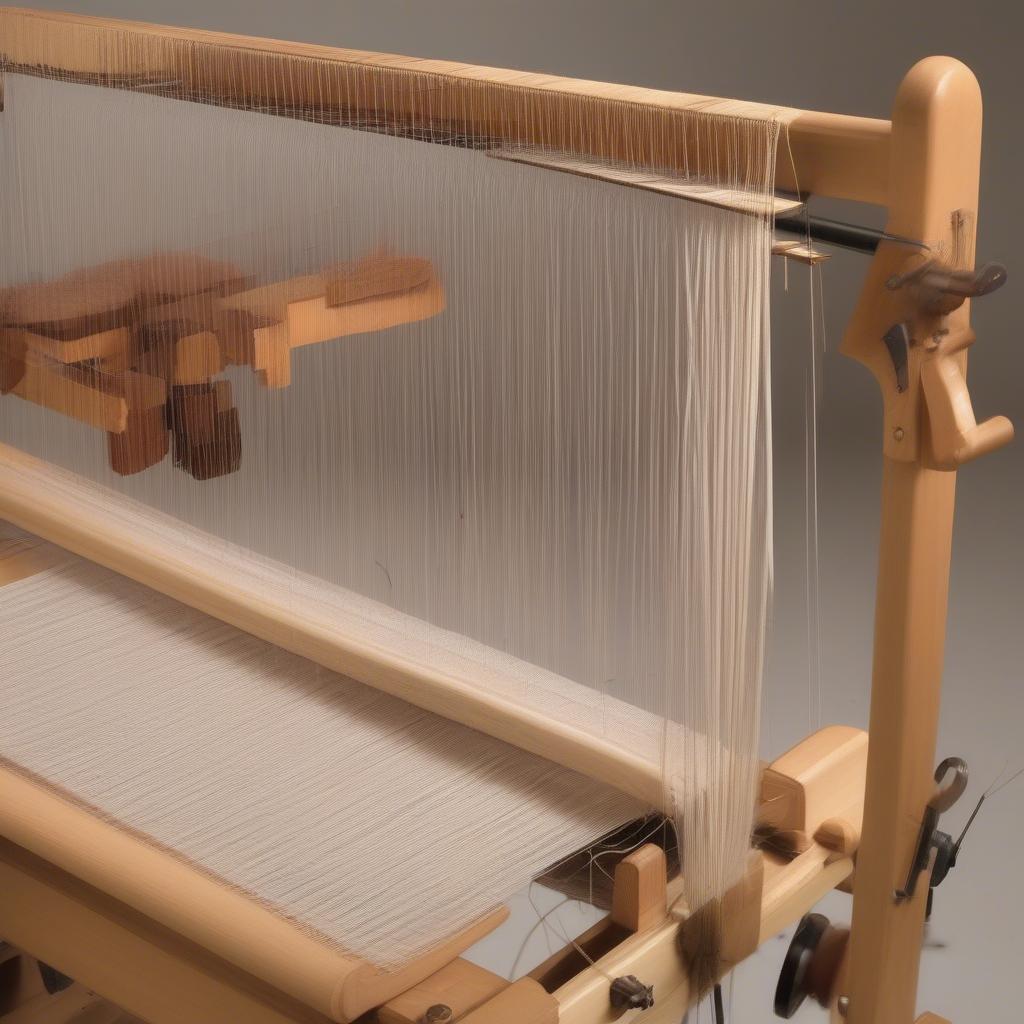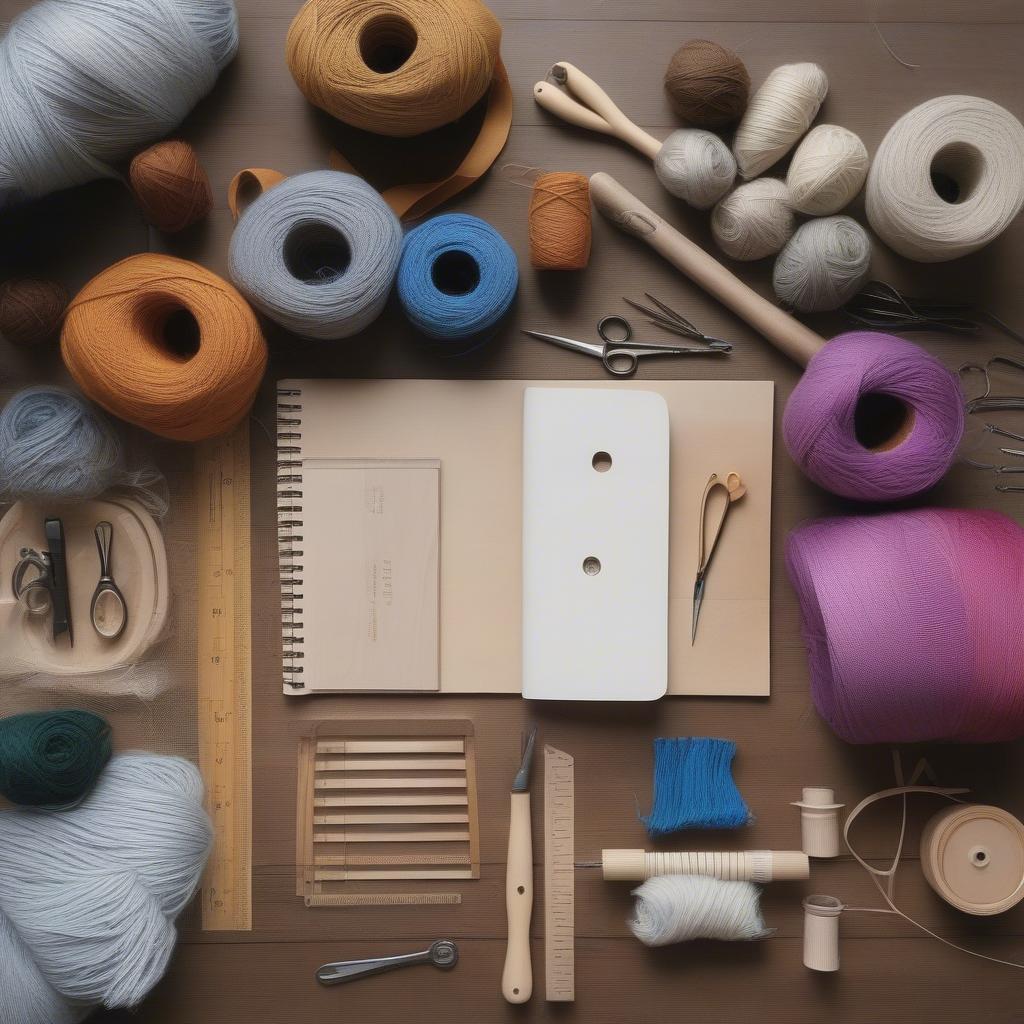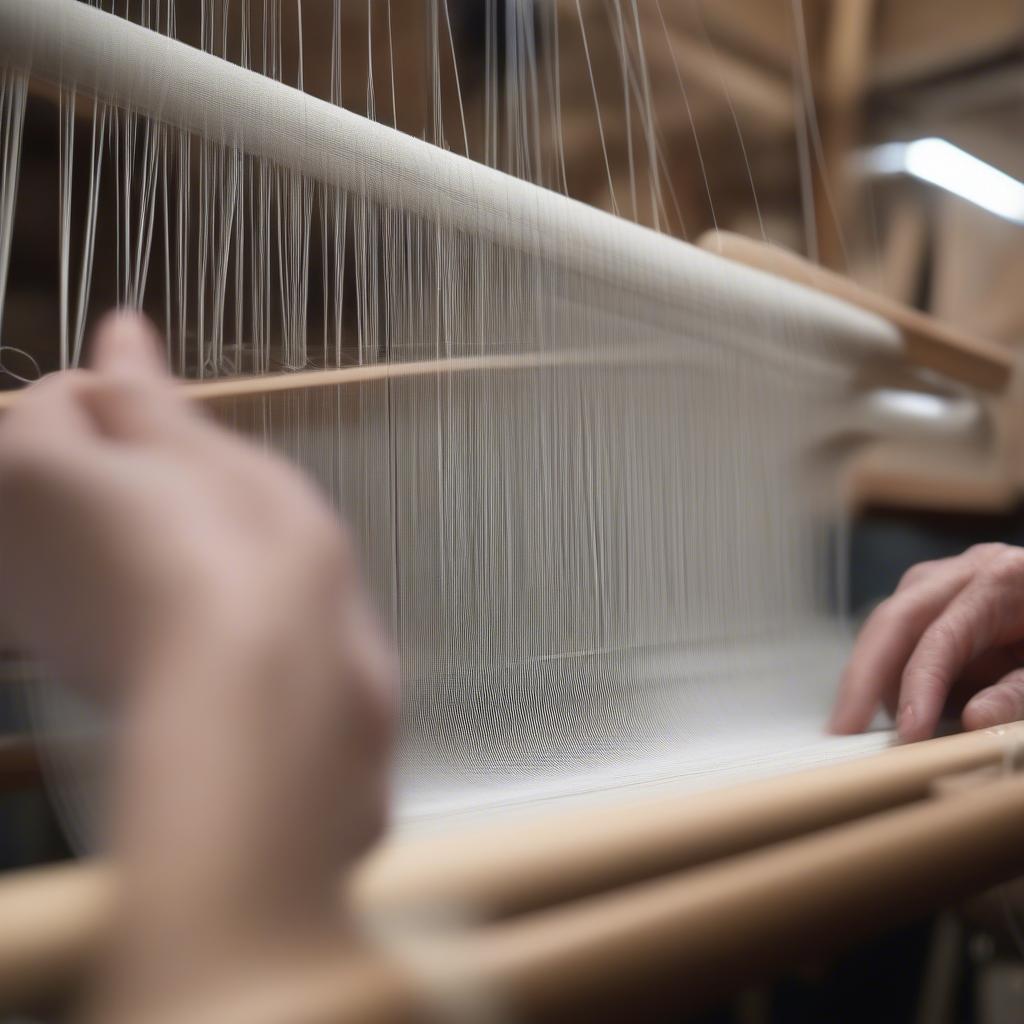Weave Table
Learn to Weave on a Table Loom: A Beginner’s Guide
Learning to weave on a table loom opens up a world of creative possibilities, from intricate tapestries to simple, elegant scarves. Within the first few hours of learning to weave on a table loom, you’ll be amazed at the beautiful textiles you can create. This guide provides a comprehensive introduction to table loom weaving, perfect for beginners eager to explore this fascinating craft.
Getting Started with Table Loom Weaving
Choosing the right loom is the first step in your weaving journey. There’s a table loom for every weaver, from simple frame looms ideal for beginners to more complex models offering advanced features. learn to weave on schacht table loom. Consider the size, portability, and ease of use when making your selection. A smaller loom is often recommended for beginners to Learn To Weave On A Table Loom, allowing you to grasp the fundamentals before tackling larger projects.
 Setting up a Table Loom for Beginners
Setting up a Table Loom for Beginners
Understanding the Basics of Weaving on a Table Loom
Before you begin to weave on a table loom, understanding the core components and terminology is crucial. The warp forms the foundation of your woven piece, consisting of threads stretched lengthwise on the loom. The weft threads are woven over and under the warp using a shuttle. Heddles, which are strings with loops or eyes, lift specific warp threads, creating a shed through which the weft passes. The reed, a comb-like structure, keeps the warp threads evenly spaced and helps beat the weft into place.
Essential Tools and Materials
- Table Loom: Choose a loom that fits your space and budget.
- Yarn: Select yarn appropriate for your project, considering fiber content and weight.
- Shuttle: This tool carries the weft yarn across the shed.
- Reed Hook: Used for threading the reed.
- Scissors: For cutting yarn.
- Measuring Tape: For measuring warp and weft lengths.
 Essential Tools for Table Loom Weaving
Essential Tools for Table Loom Weaving
Warping Your Table Loom: A Step-by-Step Guide
Warping your loom, the process of preparing the warp threads, might seem daunting at first, but it becomes easier with practice.
- Measure and cut your warp threads: Calculate the required length and number of threads based on your project dimensions.
- Wind the warp: Use a warping board or other method to create a warp chain.
- Thread the heddles: Carefully thread each warp thread through the appropriate heddle according to your chosen weave structure.
- Sley the reed: Thread the warp ends through the reed dents, ensuring even spacing.
- Tie onto the cloth beam: Secure the warp threads to the cloth beam at the front of the loom.
table weaving generator can be a helpful resource for designing your weaving projects.
Weaving Your First Project: Plain Weave
Plain weave, the simplest and most fundamental weave structure, is an excellent starting point. It involves passing the weft over one warp thread and under the next, alternating with each row. You can achieve variations by changing the yarn color, texture, or thickness. weaving table mat is a great first project for learning plain weave.
 Weaving Plain Weave on a Table Loom
Weaving Plain Weave on a Table Loom
Beyond the Basics: Exploring Different Weave Structures
Once you’ve mastered plain weave, you can explore more complex structures, like twill, satin, and overshot. These structures create interesting textures and patterns. how to make a table weaving loom can provide insights into how different loom types accommodate various weaving techniques. lily mills table weaving loom offers a range of looms suitable for exploring different weave structures.
“Learning to weave on a table loom is a journey of discovery. Don’t be afraid to experiment with different yarns, colors, and techniques. The most important thing is to enjoy the process.” – Sarah Miller, Textile Artist.
Conclusion
Learning to weave on a table loom is a rewarding experience. By following these steps and practicing regularly, you’ll soon be creating beautiful handwoven pieces. So, gather your materials, set up your loom, and embark on your weaving adventure!
FAQ
- What is the best type of yarn for table loom weaving?
- How do I fix a broken warp thread?
- What is the difference between a rigid heddle loom and a table loom?
- How do I calculate the amount of warp yarn I need?
- What are some good beginner table loom weaving projects?
- Where can I find more resources for learning to weave?
- How do I finish my woven piece after taking it off the loom?
Common Weaving Challenges and Solutions
- Tight selvedges: Ensure consistent tension on the weft thread.
- Uneven beating: Use a consistent beat with the reed.
- Broken warp threads: Tie a knot and continue weaving.
Further Exploration
Explore different weaving techniques, such as tapestry weaving and inlay. Consider joining a weaving group or taking a class to expand your skills.
Kêu gọi hành động: Khi cần hỗ trợ hãy liên hệ Hotline: +84 388 951 999, địa chỉ: Hanoi, Vietnam hoặc Tech Avenue, Suite 12, San Francisco, CA 94105, USA. Chúng tôi có đội ngũ chăm sóc khách hàng 24/7.
